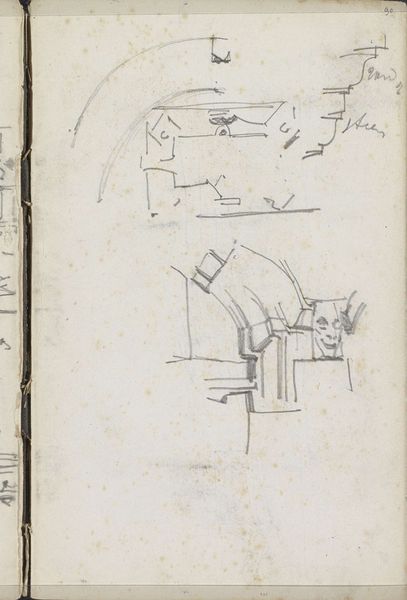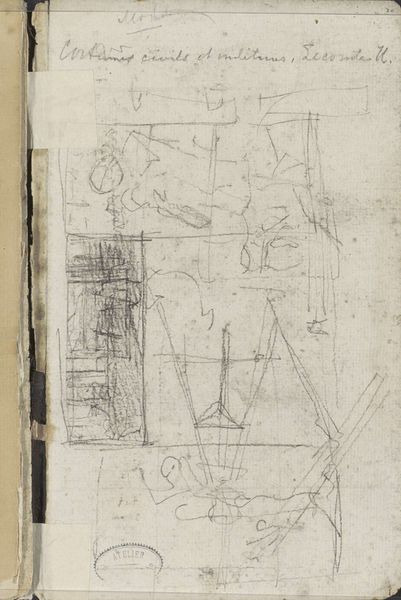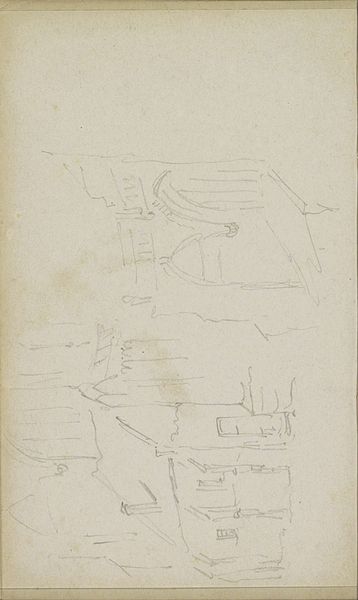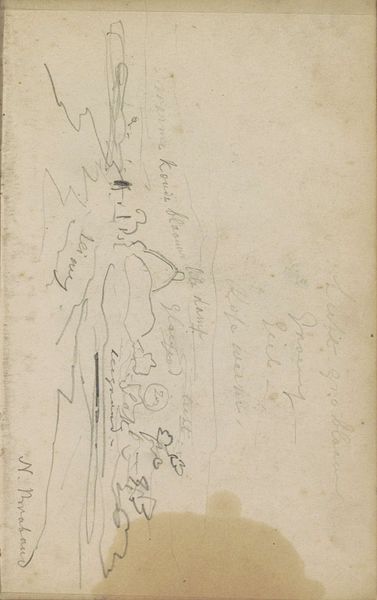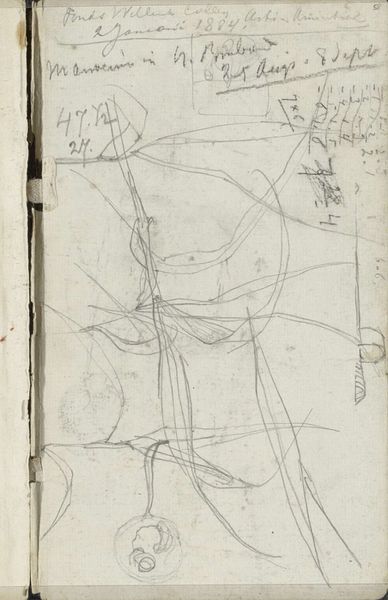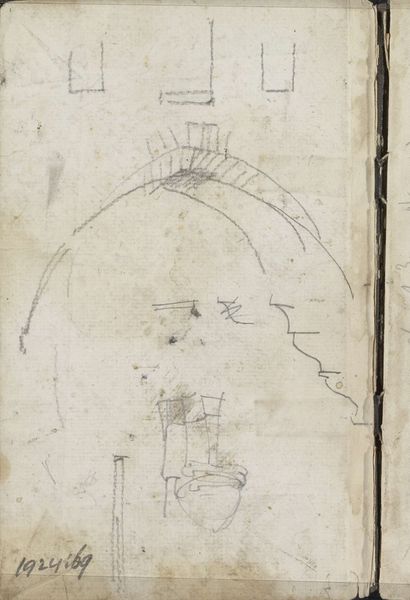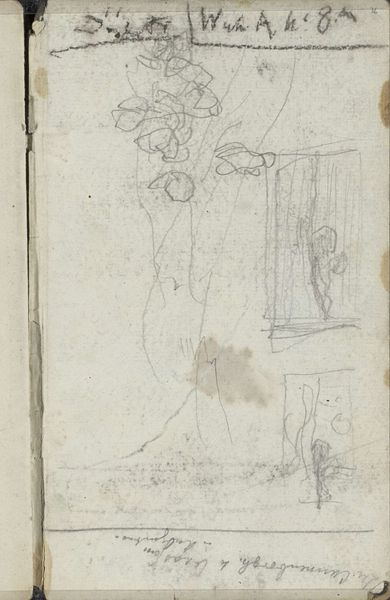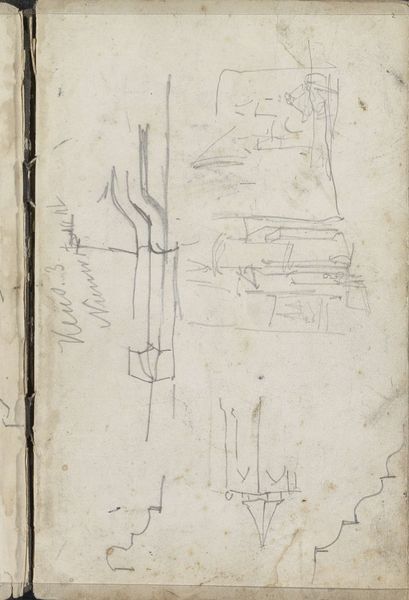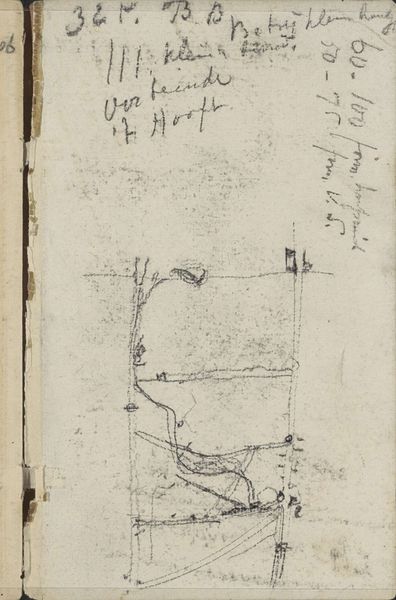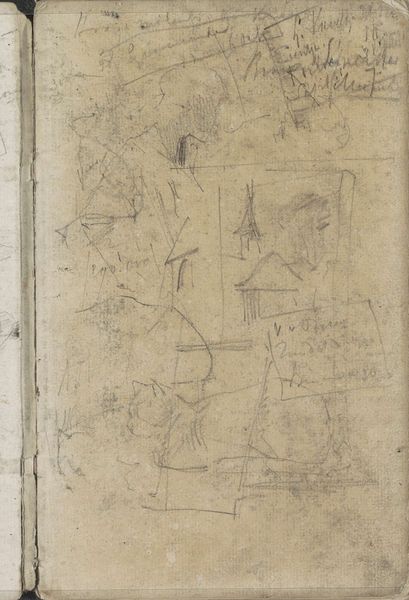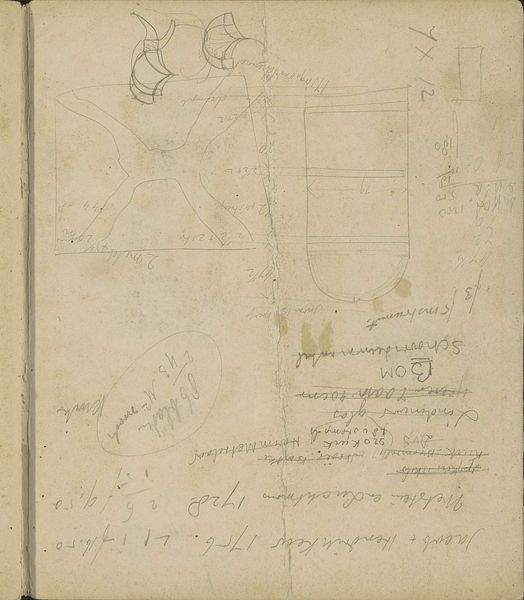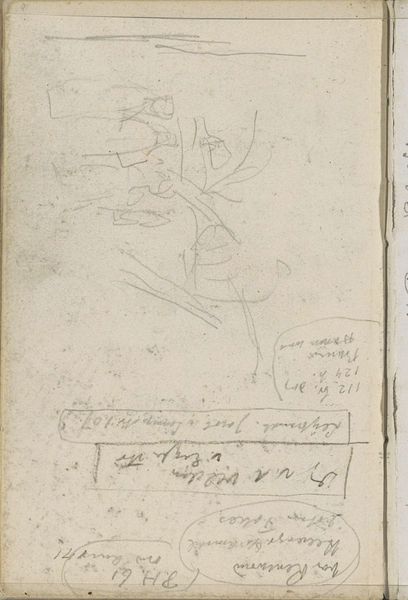
Figuren op het Rokin in Amsterdam, gezien vanuit de Bodega 1895 - 1898
0:00
0:00
Copyright: Rijks Museum: Open Domain
Editor: This pencil drawing on paper, titled "Figures on the Rokin in Amsterdam, Seen from the Bodega," was created by George Hendrik Breitner between 1895 and 1898. I find it incredibly evocative, despite being so minimal. What draws your attention when you look at this sketch? Curator: Well, seeing a city scene captured so fleetingly, yet recognizably, it reminds us how Impressionism shifted the art world's focus to modern, everyday life. This isn't a heroic scene, nor a wealthy family in finery; instead, it's people going about their business. Where do you think Breitner positions himself, physically and socially, to observe them? Editor: He’s observing from inside the Bodega. It feels almost voyeuristic, capturing these figures unknowingly. How does this choice influence the narrative, do you think? Curator: The 'Bodega', a type of Spanish wine bar becoming popular in Amsterdam at the time, suggests Breitner’s participation in a modern urban culture of leisure and observation. He's not just passively recording; his choice to view them from this particular vantage point—a semi-public space of entertainment—actively shapes our interpretation of these anonymous individuals and their place in the rapidly transforming city. Notice the rough sketch; does this suggest a candid, unposed representation, contrasting the formal portraits or landscapes typically deemed worthy of artistic representation at the time? Editor: That’s a great point. The looseness really does create an impression of reality caught on the fly. It challenges what was considered proper art, I think. I wonder, how the development of photography, during this period, changed the production and the reception of artworks like this drawing? Curator: Exactly. Photography’s emergence prompted artists like Breitner to explore aspects of perception beyond mere reproduction, leading to an exploration of the artist's perspective and a focus on subjective experience. This sketch serves as a testament to his effort of capturing the pulse of urban life. Editor: It’s fascinating to think about how social context shaped this glimpse of everyday life in Amsterdam and changed art itself. Thank you! Curator: A pleasure. I enjoyed re-visiting Breitner's historical narrative, seeing Amsterdam’s social life on paper.
Comments
No comments
Be the first to comment and join the conversation on the ultimate creative platform.
